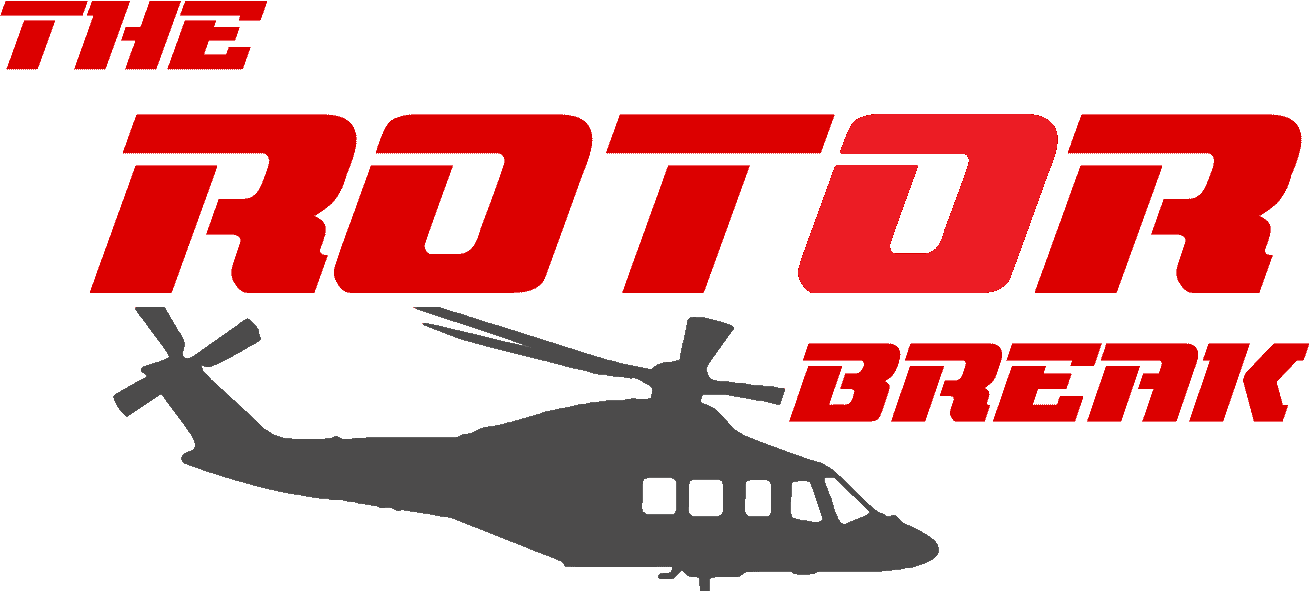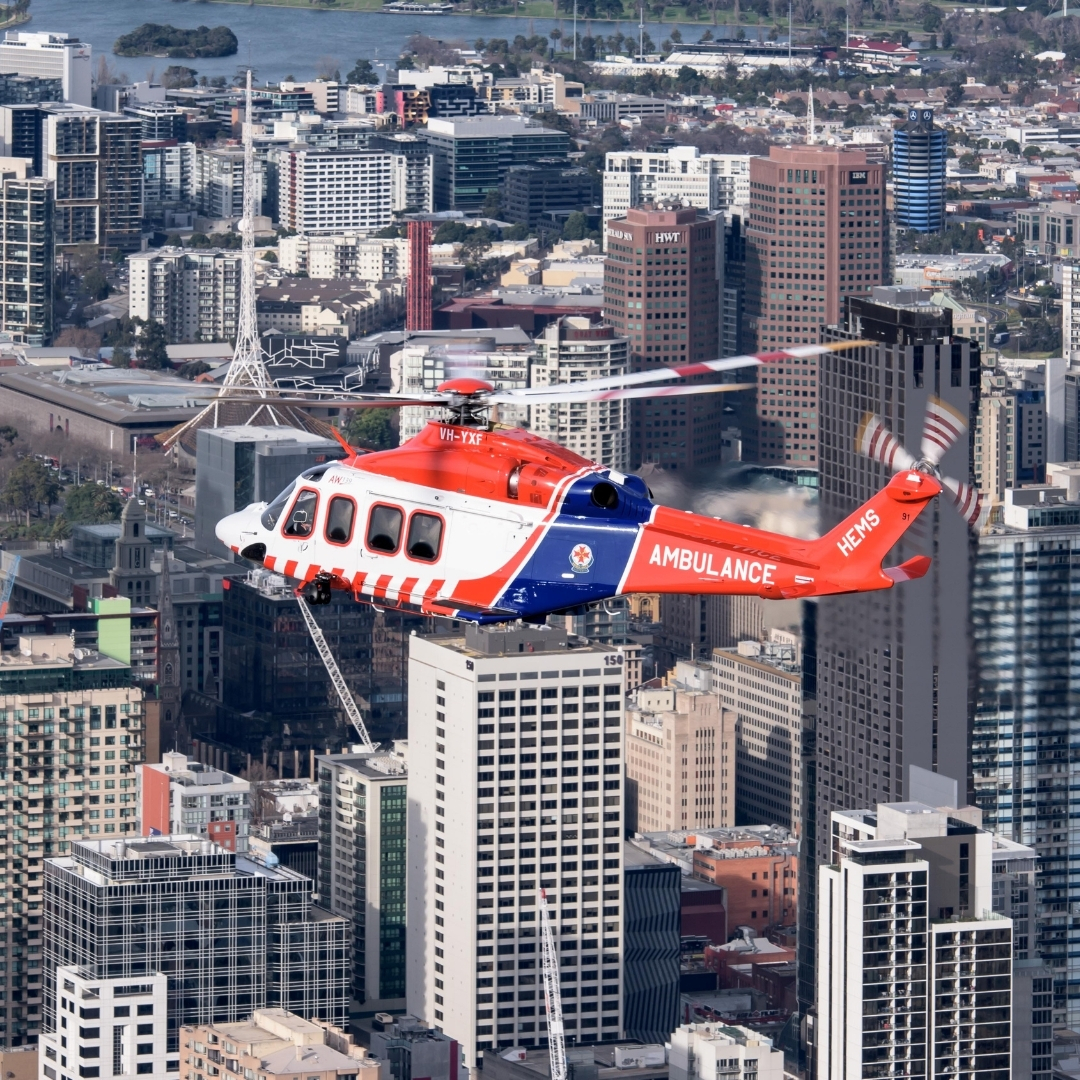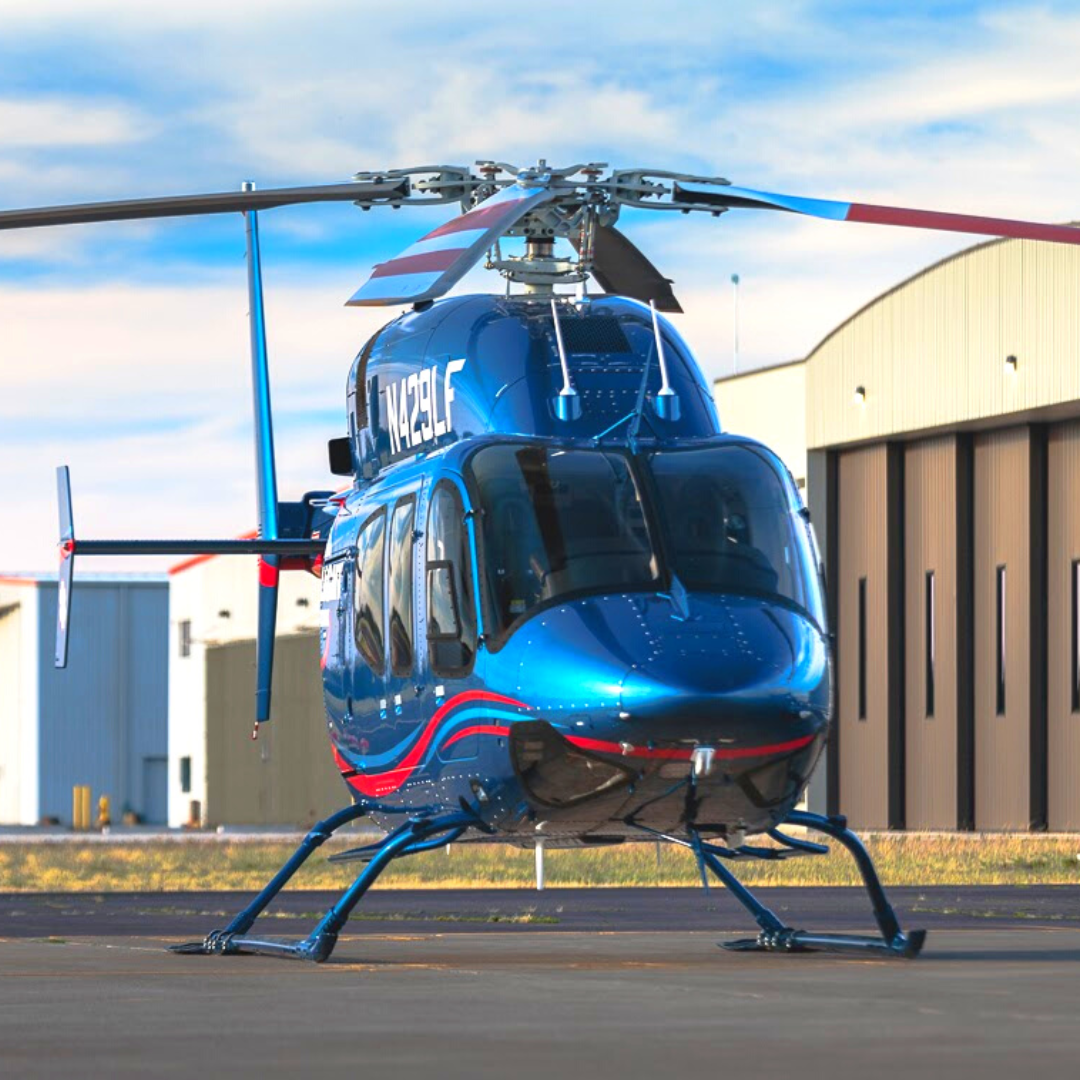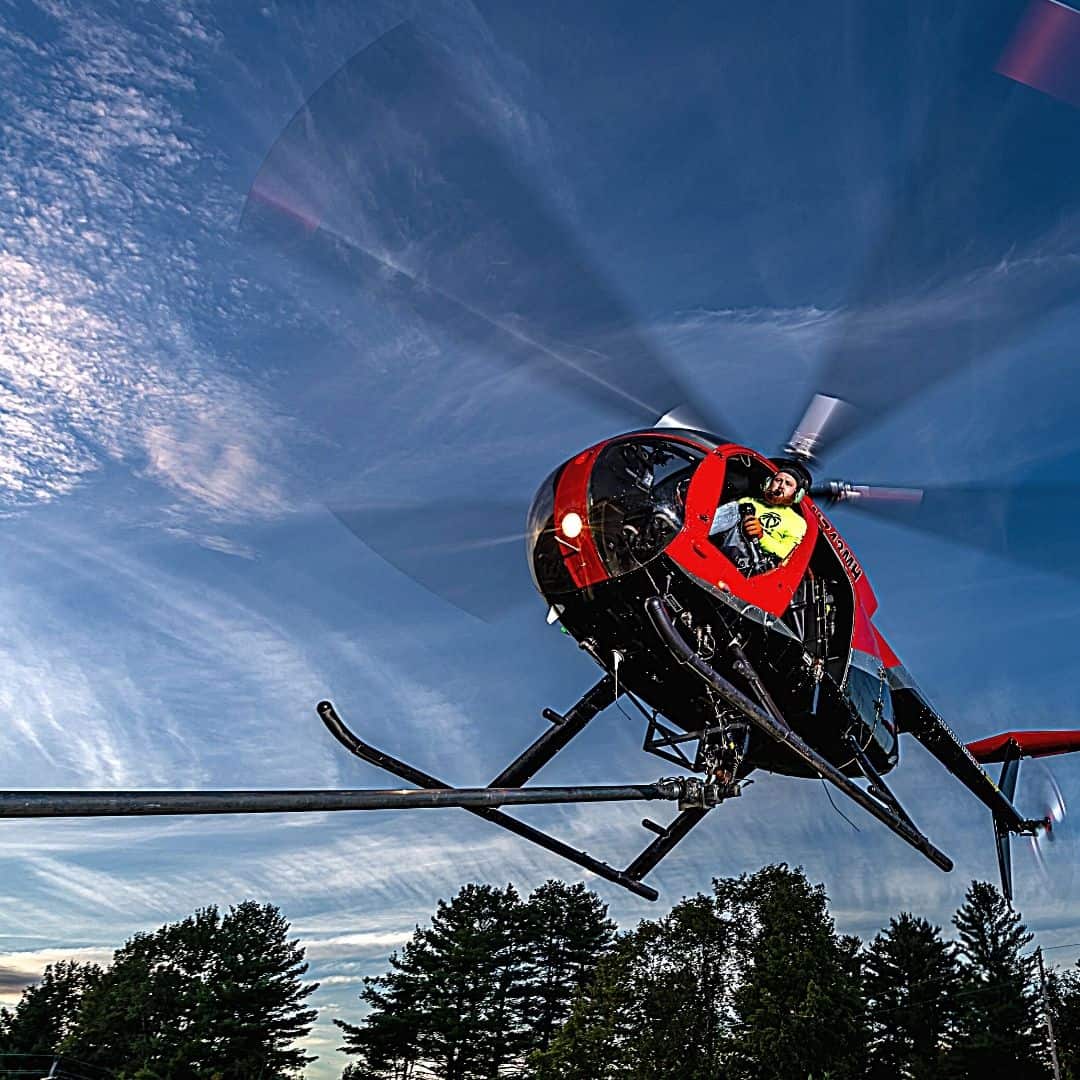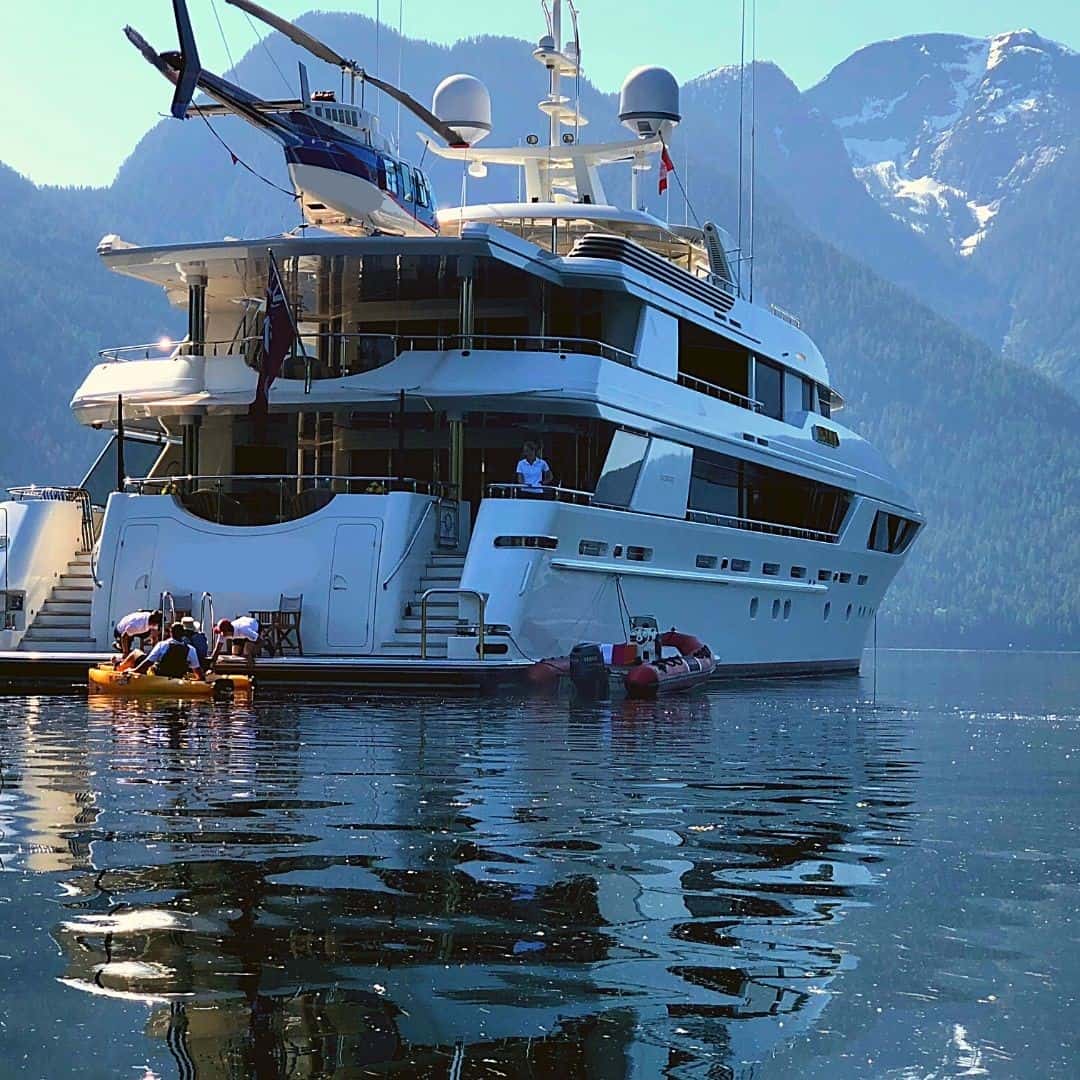by Darren Hodge
Darren Hodge has been a Medic for over 30 years and now, as a Helicopter Flight Paramedic with AAV (Air Ambulance Victoria) in South Eastern Australia , he has written a book about his most memorable experiences titled “A Life On The Line”. The following is one of those unique life-saving experiences, giving us a window into his “Day in the Life” as a Helicopter Flight Paramedic!
The Rotor Break
I woke from a terrible sleep confused. My phone chiming away.
A respected neurosurgeon from Melbourne’s Royal Children’s Hospital, with questions. ‘How did Liam’s injuries come about exactly?’
I explained all I knew. Liam, 11, had climbed a rock, slipped, fell several meters to rocks and rolled into a stream. He was unconscious from the moment of impact. When immediately retrieved from the water, he was found to have severe head and chest injuries. ‘How did the operation go?’ I asked.‘He’s got severe fractures to his skull. The damage to his brain is extensive,’ she said. ‘and the prognosis?’ I feared her answer. ‘Liam had a lot of surgery. I suspect he’s lost the vision in one eye. And he’s suffered a severe stroke. Cognitively…’ she paused, choosing her words with care, ‘I am very concerned for him, longterm.’ I remained silent. ‘What I have learned from this type of work is that sometimes I am pleasantly surprised with outcomes. Other times I am disappointed. ‘Let’s keep our fingers crossed’.’ I concluded that Liam would do poorly because I had heard the guarded replies to family’s questions to keep the family positive, allow them time to prepare for devastation, and not allow their despair to affect the patient. Twenty-four hours earlier Liam and his parents were enjoying life, bushwalking and mountain bike riding in Mt Kosciusko state forest in southern New South Wales, 500 kilometers from Melbourne’s Royal Children’s Hospital. How someone’s world can change in a blink of an eye, I thought, not for the first time, and fell back into a fitful slumber.

00:00 hours Geehi Gorge, Kosciusko National Park NSW 14:30 hours Eastern Standard Time.
Liam lay unconscious on the bed of the stream. Liam had an open fractured skull, his chest showing signs of severe injury. His parents and several of their friends, kitted out for bushwalking, recovered from their shock and sought help by phone, discovering that they had no mobile phone coverage. A member of their group frantically raced back to the campgrounds, a tough hike over difficult terrain.
00:40 hours, Old Geehi Camping Ground, NSW.
Frantically, he scoured the campers for a satellite phone. There were none. He drove off to where he knew there was mobile phone coverage.
01:50 hours, NSW 000 emergency call center
Liam’s situation and location were described. The closest helicopter to Liam was based in Canberra ACT, but it was already tasked, and NSW Ambulance did not have any assets near Liam. A call was made to Victoria 000 for assistance. The closest ambulance to Liam was located in Corryong, Victoria near the border with NSW but well over an hour away. The call was then passed to Air Ambulance Victoria.


5 new AW139’s (Bottom)
02:04 hours, Hems 2 Air Ambulance Victoria (AAV) base, Latrobe Valley.
I took the call. We were tasked to attend an 11-year-old boy said to be unconscious with a punctured lung. There was confusion as to the location and we were given three possibilities that spanned an 80 square kilometer area. Communication issues are often a challenge in this type of work. This flow of information had already gone through five sets of hands before I relayed the information to the pilot and the crewman. There was a question mark after ‘punctured lung’. Was there a medically trained person with the boy or did someone in the information flow add their interpretation? (I would later learn that Liam’s father had in fact made the diagnosis.) I briefed the crew. The call to Geehi Gorge had the pilot look at distances, fuel, fuel locations, aircraft performance, weather, possible hospital locations, endurance, and winch implications (this was tiger country, the case was very likely to require a winch) like time in the hover at the site, which consumed large amounts of fuel. The crewman began looking at maps to determine a location, direction, heading, and track for the pilot, as well as his role, should the case be a winch job. As an MFP, I was anxious to get to that unconscious child, contemplated treatments, and compartmentalized the clinical components and the technical rescue possibilities. Minutes pass. The location, we figure, is approximately 450 kilometers from our base, and the closest trauma facility is in Canberra. We can theoretically fly to the scene, land and get our patient to Canberra, but we will need to stop and refuel at some point if we need to search for the patient or if we need to winch him out. The closest fuel was in Benambra and Albury, but there may also be drum fuel at Corryong. The afternoon was over 40°C. We would be operating at altitude anywhere near Mt Kosciusko. We will not have single-engine performance should we suffer an engine failure. The aircraft has two engines, and the conditions and aircraft weight often give us the luxury of flying on one engine. Heat and altitude reduce aircraft performance. So, for this task, should one engine fail, the aircraft will come down. We reconfigure the cabin for a possible winch and take on additional fuel. We lift off at 02:15 hours.
02:15 + hours, Hems 2 Helicopter Airborne
The crewman and I begin by trying to confirm the location, and use the most obvious method, call the initial caller from our aircraft phone. We call often but go to voicemail each time. We knew from experience that when people have to leave an injured person to gain reception, they naturally, instinctively return to the patient to try to help them after the initial call to 000 (The Australian National Emergency Number.). So, we begin the process of calling the call centers and interrogating the information and staring at maps to try to make sense of it all. It took a while, but we believed we had locked down the location. We brought the area up on Google Earth. Very steep terrain. The likelihood of a winch is thus increased. This led to more discussion about fuel and fuel locations. A huge component in the way in which we approach this work is to discuss multiple options and form contingency plans. It is not uncommon to have five or six plans only to ditch the lot. In this case, we discuss the following six:
- Fly directly to Benambra, which is roughly on the way
- Refuel, fly to scene, winch in, winch out, fly to Canberra Hospital.
- Fly to the scene, land, locate the patient, carry him to the aircraft, fly to Canberra.
- Fly to the scene, winch in, winch out, fly to Corryong for drum fuel — drum fuel can take time to pump, potentially an hour or more — and fly to Canberra.
- Fly to the scene, winch in, winch out, fly to Benambra for fuel, fly to Canberra.
- Fly to the scene, winch in, aircraft lands nearby, winch recovery, fly to Corryong for fuel, fly to Canberra.
- Fly to the scene, winch in, land the aircraft nearby, winch recovery, fly to Benambra for fuel, and fly to Royal Children’s Hospital in Melbourne, Benambra being closer to Melbourne than Canberra.






To add to these permutations there were at least four factors to be considered:
- To stop at Benambra on the way may delay us arriving to the patient by around 1 hour.
- Pumping drum stock fuel = 1 hour + versus pump fuel = 30 minutes.
- Canberra Hospital did not have a pediatric neurosurgeon, the skillset best capable of saving outpatient, and the patient would need to be retrieved from Canberra to a Sydney hospital further delaying access to a neurosurgeon.
- The decision to winch in and intubate the child in the gorge, adding a significant time delay, and the added risks of winching an intubated patient, given the lack of technology and support, versus the decision to winch the patient out unconscious and treat him in the air.
To say that there were many critical decisions to be made is an understatement. Our Pilot Andre VanDerBeek had vast experience, and he was keen to stop at Benambra for fuel, but all pilots want to fuel and, as they say, the only time you have too much is when you are on fire. I desperately wanted to get to the patient and was in favor of finding fuel later. We pressed on.


03:50 hours, Geehi Gorge
A young ALS Paramedic Lynsey Smit and her volunteer assistant, the first medical help to arrive after a hard trek in. Lynsey confirmed Liam had an open head injury, a probable chest injury, and was unconscious via radio. She said they were in the bottom of a very steep-sided part of the gorge, and it was her opinion that, from whenever they had a sufficient team at the scene, it would take many hours to carry our patient out.
04:00 hours, Hems 2 Helicopter Airborne over the Kosciusko area.
My heart sank as I considered the patient-management challenges ahead. I quickly prepared additional equipment and discussed what we would do. As we closed in on the location, we were in constant communication with the Corryong ambulance crew, the likelihood of winch insertion and extraction increased. We had confirmed the availability of fuel at both Corryong and Benambra and advised the Corryong supplier that we would be looking to seek fuel later. Fuel was tight, so there was pressure to move quickly, but never at the cost of safety. My preference was to winch in, assess Liam and then plan from there. Andre was keen to put me down, head to Corryong and pump the drum fuel, be back in an hour and a half. We’d see. Overhead, we three noted this was the definition of tiger country. The group was located on the edge of a stream sided by high ridges, the passage to them so narrow the helicopter could not turn in it. We ran up and down the streamline, climbing to turn and then descending back down to the stream. The crew were all shocked by the location. We could not descend as low as we would have liked as we were getting too close to the huge trees on both sides. Dead trees overhung the area where the group were, and we were concerned one may fall in the downwash, so we decided to put me in upstream 500 meters. Standard winch equipment is 42 kilograms with the stretcher, but, given this child’s injuries, I wanted to take more. Lugging 60 kilograms of equipment over the large granite boulders that lined the creek would be slow and problematic, so we decided to put me down with the backpack, and send the equipment down nearer the patient. We shut down all external radios, made multiple safety checks. All thoughts of the patient were put to the side. We needed everyone focused on their role. We use a radio that allows me to stay in contact with the pilot and crewman; it also allows me to hear all the discussion between pilot Andre and crewman Paddy Howlett.
We climbed, made the final call to Air Ambulance Victoria, and began the final checks and brief. High temperature, high altitude meant we could lose an engine during the winch and the helicopter would come down. Andre said, if the aircraft suffered an engine failure, he would attempt to move the aircraft left, giving me the best chance to survive. When winching, the aircraft would be pointed into the wind. Unfortunately, this meant the aircraft would be pointed directly into the mountain, the nose of the helicopter would only be 10 meters from the mountainside. Upstream over the drop position, Andre handed Paddy “the con”, Paddy guided the helicopter to the exact spot, I sat in the doorway ready to go. I scanned back and forward, checking for clearances. Little room to maneuver. The aircraft is now subjected to turbulence from the mountain, bucking wildly. Andre fixed on some terrain as a reference, his feet and hands working overtime, holding the machine steady. I looked down. Hell, we are high! Do we have enough cable? The hoist has 290feet of usable cable, so we would soon see. Final safety checks, and out the door I go. I note the direction of the patient — I have walked the wrong way more than once. I note the direction I will run should the helicopter lose power. I continue down to the valley floor and look up: the helicopter is now tiny. I listen to Andre and Paddy, the communication calm but busy. Paddy panting, odd because there would be fewer fitter people than Paddy. I hit the ground in the exact spot we identified, an area of 20 square feet. (I later learned over 220 feet of cable was out when I hit the ground, the highest operational winch of my career, the equivalent of a 20-story building.) Paddy and Andre had done a great job!


When you assess terrain from above, it always appears easier than what you find on the ground. Geehi Gorge was no exception. I put on my 20-kilogram backpack and started climbing over huge granite boulders. Certainly challenging, but not too bad. I climbed over a large rock, the pack shifted and I somersaulted into the stream. I was submerged. What an idiot. When I put on the backpack, I had made the mistake of leaving the harness straps loose. I hurt my shoulder and knee, but the worst of it was that I had wiped out most of my communication package, two phones, pager, and one radio went to the River Gods. Fortunately, my line-of-sight radio still worked and I would later find that my sat phone was recovered, much to my surprise. We use a ‘no comms plan’: should they not hear from me in 30 minutes the aircraft will return and we can revert to hand signals. My anxiety grew, my stupidity was causing a delay. I quickly scrambled up the valley.
04:10 hours, Geehi Gorge accident site.
As I approached the group, I saw the distress on Liam’s mum’s face. Lynsey introduced herself and began a quick handover. Liam lay on the edge of the stream, eyes closed, and his arm flailing, indicating cerebral irritation. March flies circled his wounds, biting into his flesh. Despite the passage of time and the desperate picture I saw, My observations of Liam were better than I had expected. The family and friends had bandaged Liam’s head wounds. Lynsey and her team had done a great job: they had put a cervical collar around his neck, applied oxygen therapy and inserted two IVs when, at that time, it was contraindicated for an ALS paramedic to insert IVs in children. I remain grateful that she took the initiative and broke that guideline.
I examined Liam. When the bandage had to be reapplied, I had the opportunity to examine the wound to his head. It was bad! A large, depressed, open skull fracture. Liam’s right pupil dilated and did not react to light. Blood discharged from one of his ears, potentially containing the cerebral spinal fluid that surrounds the brain. The boy desperately needed a neurosurgeon. Liam also had a significant chest injury with multiple fractured ribs and a punctured lung. My anxiety was growing. At the bottom of a gorge hundreds of kilometers from the help the child needed, we had to move quickly. But he was at risk of dying if we did not optimize his condition. Liam had been critically injured when he fell, his little body had compensated to keep him alive, but his ability to compensate was exhausted and he was beginning to decompensate. Some of the procedures you wish to use have the potential to compound decompensation, and have the potential to kill the child. Despite my cognitive burden, I had to make decisions quickly. As I considered the options, Lynsey talked with Liam’s parents. I didn’t have the time to talk to them much at that point, and Lynsey had developed a rapport with them.
The helicopter thundered overhead. I needed to give Andre and Paddy a situation report. I asked them to land nearby, establish communication with Air Ambulance base and that, failing to hear further from me, ‘Be overhead for a winch recovery of an unconscious child in 30 minutes.’ We would land back at Lynsey’s ambulance and then place Liam in an induced coma. The decision to winch Liam out unconscious, as opposed to placing him into an induced coma on the valley floor, is controversial in the prehospital world. Patients have died during such procedures. Some air ambulance operations would have performed the procedure. AAV does not have a policy, but all their literature suggests that a ‘considered risk assessment’ be performed. Liam’s unconscious state meant he was unable to protect his airway. Dealing with a head injury, our goal is to optimize all the parameters possible. Intubating Liam would have allowed us to optimize several parameters and protect his airway, but the risks of doing so on the valley floor, with limited tools and assistance available, are extreme and on the winch up any failure on my part to squeeze the bag valve mask bag for only a few minutes could prove fatal. Liam had survived for four hours when I made the decision to winch him unconscious. We gave Liam some pain relief and quickly loaded him to the stretcher. He settled in his constraints and his dad held his hand and talked to his son, reassuring him that ‘the good guys are here, they are looking after you, you are going to be OK’.
I asked Lynsey how long it would take her to get back up to her ambulance. The trip down had taken 40 minutes, so she estimated it would be 45 minutes back. I asked her to make the best speed, told her that I needed her there ASAP. As soon as Liam was on the stretcher, this very able paramedic left, last seen steadily running up the creek bed. I called the aircraft on the sat phone. The engines were running, so they were only a few minutes away. I expressed concern in that we would struggle to establish or maintain a tagline angle (we attach a tagline to the stretcher, the other end of it held by a person on the ground, to stop the stretcher spinning. Any tagline needs to be clear of snags and the ground operator needs to be some distance from the winch point to create a tagline angle. Directly underneath is not an option: the stretcher just spins around the axis of the tagline). We agreed to try and maneuver the aircraft as soon as we cleared the trees, but we all acknowledged too that there would be little room to reposition. I moved the group away in case we brought down a tree with downwash, with the exceptions of the friend operating the tagline and Liam’s father steadfastly holding his son’s hand.
The aircraft rotors crashed the quietness of the valley floor as they moved overhead. Paddy and Andre worked like a well-oiled team, I listened. Last checks. Time for Liam’s dad to go, so I took the child’s hand. Liam’s father looked me in the eye, we held a stare for a second; he was pleading for me to look after his son and I was promising that I would. He squeezed my hand holding Liam’s and left.
We lifted. The helicopter was so much smaller than usual, and I’m not a fan of the going up part. But the normal anxiety I would be feeling was canceled by an overwhelming desire to get Liam to the hospital alive. The ascent was rapid. The banter between paddy and Andre was intense. All going to plan. Until I looked down and noticed the tagline was directly under the aircraft, despite Paddy moving the aircraft back and left. I recall thinking we had really dodged a bullet not getting into a spin. At about 180 feet, we rocked violently. Then we began spinning around the axis of the tagline very violently. I released the tag line, Paddyturned the aircraft 90° and began a very slow forward flight. This slowed the spin. We were recovered to the aircraft. I ceased the spin by patting off the wheel. A superb piece of airmanship by Andre and Paddy. I quickly secured the stretcher and plugged into the communication system for the short flight to Lynsey’s ambulance.
The second the stretcher was secured Paddy and I went to work. Monitors applied, bags removed from cupboards, with a running brief of what we needed to do. I think in the space of 30 seconds I had given Paddy about 30 orders. I advised Andre that he needed to put some gloves on, not all our pilots enjoy this aspect of the work but we can rely on them when they are needed. The rotor starting spooling down. I looked out the window and saw Lynsey as she approached. Even her pants were saturated with sweat. I checked her time. Under 30 minutes. She’d ran the entire way! In 43°C heat!
04:52 hours, Lynsey’s ambulance Horseshoe Road, Geehi, NSW
Liam underwent a more formal assessment, primary, secondary survey, and ultrasound. I then delegated tasks to Lynsey, Paddy, and Andre. We initially resuscitated Liam to prepare him for being placed into an induced coma. When I placed a large needle into his chest, blood began to flow from the catheter, a worrying sign, he was bleeding in his chest on top of the punctured lung. When we were ready to place Liam into the coma, without question one of the most frightening procedures we perform, I briefed the team. It was executed without issue. Andre had never assisted in such a procedure and I suspect Lynsey had not either, but everyone did a great job.
We began to prepare Liam for flight, so Andre thought to give the fuel depot at Corryong a call. The fuel guy had thought we were not coming and had left. So, it was to be full-steam to Benambra, the next closest fuel, and on to the Royal Children’s, the closest trauma hospital. This may have been a blessing in disguise. Corryong to Canberra, for Liam, meant another transfer, to Sydney.
05:35 hours, Airborne from Geehi to Benambra
We lifted and turned south to Benambra. Liam had fared well through the intubation, but in the air, his blood pressure began to fall. With over two hours of travel ahead of us, I was keen to speak to the Royal Children’s staff. First, for permission to administer blood, and secondly to discuss the in-flight management of Liam. I wanted to put my finger into Liam’s injured chest, a procedure called ‘finger thoracostomy‘. This allows the build-up of gas and blood to escape. My management plan was endorsed with an enthusiasm which I found supportive. Paddy assisted me as Andre extracted top power from the turbines driving us towards Melbourne. We administered blood, but Liam’s blood pressure continued to fall. I knew Liam was bleeding in his chest and knew I needed to do the finger thoracostomy ASAP. Paddy prepared all the gear. I repeated the ultrasound assessment, completed a blood gas assessment, warned Paddy of a bit of impending blood loss, made the incision and introduced my finger into Liam’s chest. A large amount of blood spilled on the floor. Paddy reeled and became distressed. I had failed to adequately warn him, this was a brutal procedure. (He would need time off after this case. Pilot Andre too!) Blood flowed from the tiny chest and then stopped. But the blood pressure did not improve as hoped. My anxiety was growing as Liam’s condition was deteriorating. I manipulated the ventilator based on the blood gas assessment while trying to preserve blood pressure.
06:21 hours, Benambra Airport NE Victoria.
Touch down near the tanker, we had advised the refueler of our need to be quick. Paddy was out the door as soon as Andre cleared him, put chocks in, connected the earth cable, and inserted the fuel nozzles as the helicopter was shut down. The second the rotor stopped spinning, 1200 liters of Jet A1 fuel flowed into our tank. Andre ran through his pre-flight inspection as the tank filled, then got back in the pilot’s seat, strapped himself in and performed every pre-flight check he could. He did not remove his helmet, despite the 40°C air. I rang the Children’s Hospital again, updating them. Sharing both information and the cognitive burden, is a great tool, used by paramedics in extreme cases. The first concern of the consultants in Emergency and the ICUs was the failing blood pressure. They suggested that I perform a finger thoracostomy on the unaffected side of the chest. I did this, but it failed to improve Liam’s condition. We were consuming our blood supply at a rapid rate and I was becoming desperate. We needed to get to the RCH! The moment Paddy cleared the fuel hose, the turbine’s ignitors began to fire, tick, tick, tick, bang as the fuel ignited. The turbines spooled up to 21,000 revs/minute and roared. Then the rotor began to turn. We could not have shaved a second off this process.
06:50 hours, Airborne from Benambra to Melbourne.
We managed to arrest the slide in blood pressure but exhausted our supply of blood in doing it.


07:58 hours, Touch down on the Helipad at Royal Children’s Hospital.
Waiting for us were a group of around 40 staff, including a respected pediatric neurosurgeon, and a team of specialist nurses and doctors. We handed Liam over. In the staff tea room, we were besieged with sandwiches, drinks, and kind words. I sat and stared at the computer notebook we use to complete our paperwork, knowing I had two hours ahead of me but not knowing where to start. After about 30 minutes sitting there, it dawned on me, my boots were full of water and had been for over four hours. Our expensive water-proof boots are great but if you fall in the water, they trap it. Exhausted mentally, I took my boots off and emptied them on the staff room floor in front of everybody. An emergency nurse cleaned up my mess, despite my apologies and protests. She diagnosed my spaced-out state, understood mental exhaustion from personal experience too, no doubt. AAV had a great liaison person at RCH, Helen Jowllette, a fine advocate for patient care, and with an infectious smile and lilting Irish laughter. She was to give me regular updates on Liam’sprogress. I remained pessimistic there, but the first signs were positive. When Liam was woken from his coma, he recognized his parents. That might not sound like much, but to this pessimistic paramedic, it was barely believable. Liam’s progress over the coming months was sort of a miracle. I had the good fortune to meet Liam and his parents during his recovery. He had vision — in both eyes! One side of his body had ‘gone to sleep’ but, according to his parents, he was ‘the same boy’. A few months later I got a photo of Liam walking on a treadmill, then a video of him riding his scooter and playing soccer. Where else do you get job satisfaction like that? I try to think of those images of Liam when work tests me.
Darren Hodge is an experienced MICA (Mobile Intensive Care Ambulance) Paramedic and although his book shares his most memorable experiences, Darren is also a Public Speaker sharing his knowledge and experience with Medical Professionals and Universities in person
You can learn more about Darren by visiting DarrenHodge.Com. Darren’s book is now available from Amazon, to check it out, click here or on the image.
Author: Darren Hodge
Author and Helicopter Flight Paramedic based out of Victoria, Australia
